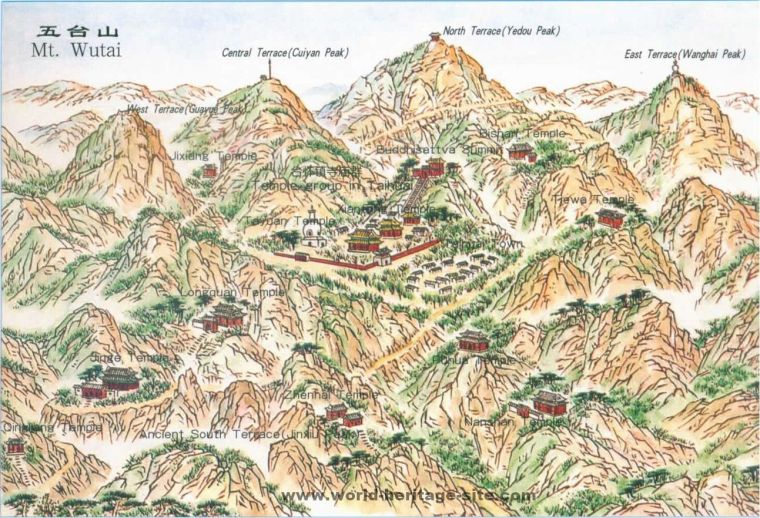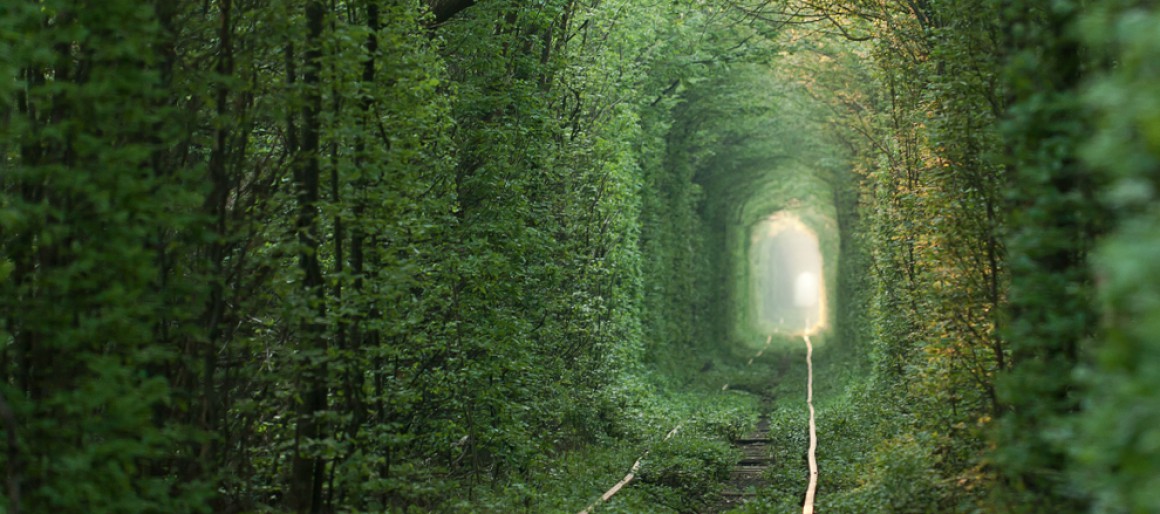
Mount Wutai grew to become a sacred mountain as pilgrimage increased and monasteries grew in importance. The five peaks of Mount Wutai embodied the “true presence” of the bodhisattva Mañjuśrī as many monasteries were built with grand representations of the Buddha. One was called the Huayan Monastery which was a seven story pagoda built on a rising hill in the central valley of Mount Wutai. This was the first building in a series of many magnificent halls and pavilions and due to it’s location on the central axis is evidence of the pre-Tang style of monastic architecture. In the image hall of this magnificent monastery stand a grand statue of the Mañjuśrī seated on the back of a lion. A Japanese pilgrim named Ennin travelled to Mount Wutai in 840 and described this statue in his diary:
“The statue of bodhisattva Mañjuśrī of the Great Sage appears in awesome spirit, and its dignified appearance is without comparison. Riding a lion, the statue [of Mañjuśrī] seems to take up the entire five-bay hall. The lion looked animated and nimble, seemingly ready to move. Vapor came out of his [open] mouth; for a while as I was beholding the view, it felt as if the lion were going to take off.”
This sacred place was meant as a place to revere the iconic statue and as a place of practice and enlightenment. Around the end of the seventh century, Mount Wutai went through a major transition, shifting the focus from the mountains to the bodhisattva. Mount Wutai was eventually converted into a Buddhist sacred site. The manifestation of Mañjuśrī’s “true presence” actually altered the outlook of Mount Wutai.
It’s amazing how definitions and meanings of words, phrases, and places can change over time as the cultures changed. I feel like this change in meaning of Mount Wutai is similar to that of any site in America or around the world in which an important event has happened and changed people’s understanding and perception of that place. Or the meanings has changed of certain locations due to people capitalizing on natural wonders that don’t belong to them. It’s also similar to how meanings of words can change over time. The first word that comes to mind is the word “gay.” This word began as another way to say happy and transitioned to being synonymous with a person who identifies as a homosexual. Also for a while, teenagers would use is as another way to call someone stupid or a whimp but has since been fading out due to the changing veiwpoints of today’s society.
Therefore, as the number of the monasteries increased in the mountains so did Mount Wutai’s association with Buddhism and became a sacred place for practicing the religion. Mount Wutai became one of the most important pilgrimage site in Tang China. Due to it’s remote location the pious believer must travel a good distance in order to engage in the many spiritual experiences to be done at Mount Wutai.
SOURCE:
Lin, Wei-Cheng. Building a Sacred Mountain. Seattle, US: University of Washington Press, 2014. ProQuest ebrary. Web. 9 May 2016.
